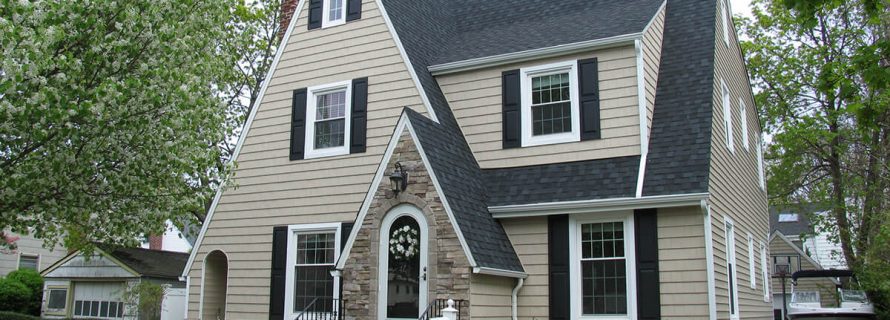How to select the best new siding for your home

In the Internet age, many people attempt home design projects by themselves. Do-it-yourself crafts, furniture and accent pieces are popular in the homes of amateur interior designers, but regardless of how good you get at designing your home, there are alwayshome design jobs where you’ll need to call in the professionals. Like most exterior work, getting new siding is one of those tasks that needs the touch of an experienced team.
But, if you’re considering a new siding option for your home, it can be difficult to know exactly where to start and how to begin looking at the many types and features of siding. Alure Home Improvement exterior design specialist Vinnie Maddaloni advised homeowners how to start the process of getting new siding in an interview.
Find a reliable partner Maddaloni recommended that people start off by finding professionals that they want to work with. Expert exterior designers can help you find the perfect design and materials for both function and form – improving your home’s durability, insulation and curb appeal.
Maddaloni explained that working with a knowledgeable exterior designer who understands things like how certain products and designs fit in with weather and other conditions in the neighborhood can be a huge benefit during the design process.
“We’re not out just throwing numbers around the house, we’re spending a lot of time designing. [Homeowners’] best chance is to go with a qualified designer that can display examples of previous designs that would be similar to your needs,” he explained.
Using some of the technology available to contractors, initial steps in the design process will allow you to see what your home would look like with different styles and colors of siding. The image can be changed as you provide feedback and is a huge benefit in making educated selections.
Think about the big picture Once you find a trusted partner, Maddaloni advised that your next step should be to work with them to create a plan that looks at the whole picture and lay the groundwork for the entire job.
“Develop a really good plan. That’s how you start a successful siding process,” he said.
The plan should include everything from the mundane aspects like budgets and timelines, to the fun parts such as color and material choices. A reliable or trusted contractor can take care of every aspect of the siding process, from design, to scaffolding, to completion, Maddaloni said. But from a strictly design angle, it’s not about the execution of the plan – it’s about how all of the parts will interact with one another.
“The vital parts of any home improvement siding job is really the coordination of the colors and how they interact with the other parts of the home that aren’t going to be touched,” Maddaloni explained. He added that parts that will be touched, including the roof, should also be considered in making a complete plan. Thinking about when the roof was put in and if it’s likely to be replaced soon can be important aspects of the planning process.
Talk to your designer about these or any concerns at the outset to get the most helpful plan going forward.
Get the right material There are a number of siding choices on the market, but Maddaloni said that vinyl is overwhelmingly popular because of how functional it is and how great it can look. Although some homes use other materials, like stone, for specific design elements on the front to improve curb appeal, almost all of Maddaloni’s clients go with vinyl for the majority of the structure.
When you look at the benefits of vinyl siding, it makes sense why it’s so popular. Not only does it come in a wide range of colors, but it never needs to be repainted – it won’t peel or fade. The most effort that this virtually maintenance-free material needs is to maybe be hosed off every five years or so, Maddaloni said. If, for some reason, there’s an issue that arises, ensuring the product you choose comes with the benefit of a lifetime guarantee will give you comfort that your home will maintain its great look for as long as you own it!
Another aspect of siding to think about is the insulation involved. Maddaloni explained that insulation can be confusing to homeowners because other companies use it as a way to keep prices lower. Trying to save a few dollars by using 1/2 inch insulation as opposed to 3/4 inch insulation will end up costing you in the long run due to the added benefits of the extra insulating factor.
“It’s a cheaper job, but it just doesn’t give the customer everything that they need in the end,” Maddaloni said about the cost difference. The 3/4-inch insulation also offers better stability and lays flatter.
If you’re thinking about redoing the siding on your house to get a better-looking and more easily maintainable product, follow Maddaloni’s advice – find a reliable company, create a plan and choose your material. When you get a great-looking end product on time and on budget, you’ll be happy you took the time to consider all of this!
- Additions and New Construction
- All Exteriors
- Alterations
- Basements
- Bathrooms
- Customer Service
- Customer Stories
- Decks
- Design & Planning Show
- DIY
- Doors
- Educational Resources
- Extreme Makeover Home Edition
- Fashion Show
- General Remodeling
- Green Living
- Handyman Home Services
- Home Decor
- Home Entertainment
- Home Improvement
- Home Improvements
- How to Tips
- In The Community
- Kitchens
- Off-the-Wall Remodeling Stories
- Remodeling
- Resources
- Roofing
- Siding
- Social Media
- Sunrooms
- Tips & Tricks
- Trends
- Windows

